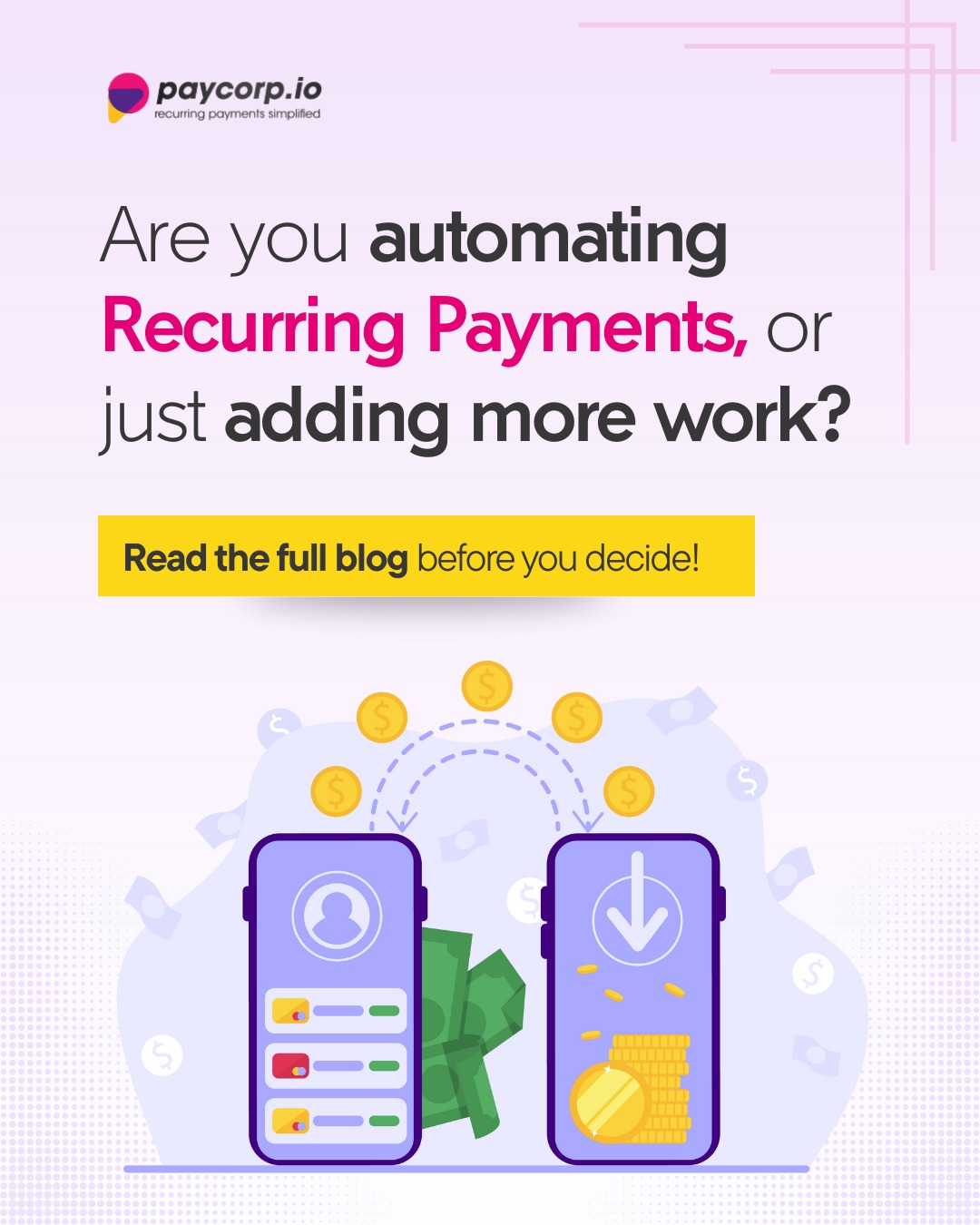In today’s digital world, businesses of every size, whether it’s a small subscription service or a large financial institution rely on recurring payments to maintain steady cash flow. But here’s the catch: simply setting up a digital payment system doesn’t guarantee efficiency. In fact, many companies think they are automating recurring payments, but end up adding more work with failed mandates, delayed settlements, and constant follow-ups.
So the question is: Are you truly automating, or just shifting the burden?
The Real Challenge with Recurring Payments
Recurring payments sound simple: a customer gives consent once, and payments should flow automatically on schedule. But the reality is different. Businesses face issues like:
- Mandate Registration Failures – Customers often drop off during the e-mandate setup due to complicated steps or bank-level errors.
- High Payment Failure Rates – Missed debits not only affect cash flow but also create extra effort in chasing customers.
- Delayed Settlements – Traditional settlement cycles (T+2 or T+3) slow down fund availability, affecting working capital.
- Manual Follow-ups – Teams spend hours calling or emailing customers, which beats the very purpose of automation.
Instead of solving problems, many recurring payment systems simply push the manual work to another stage.
What True Automation Looks Like
True automation in recurring payments is more than just scheduling debits. It’s about creating a smooth flow where both businesses and customers save time and effort. Here’s what makes it effective:
- Simplified Mandate Registration
A good system ensures customers can register mandates in just a few clicks through UPI Autopay, Net Banking, or Debit Card. This increases mandate success rates and reduces customer drop-offs. - Higher Payment Success Rate
Automated retries, smart alerts, and direct integration with banks improve success rates significantly. Instead of 70–80% success, businesses can achieve >100% success rates, which directly impacts revenue. - Same-Day Settlements (T0)
Waiting 2–3 days for settlement slows down operations. With T0 settlements, funds are credited on the same day, ensuring stronger cash flow and better working capital management. - Reduced Manual Effort
Automated reminders, alerts, and dashboards mean businesses don’t need large teams for follow-ups. The system works in the background, giving you real automation instead of added work. - Visibility & Control
A unified dashboard with real-time APIs helps businesses track every mandate and every debit, reducing dependency on scattered reports or manual reconciliations.
Why Businesses Should Care
For businesses, automating recurring payments correctly means:
- Faster access to funds (thanks to T0 settlement)
- Reduced dependency on manual teams
- Higher customer satisfaction with smooth payments
- Fewer defaults and missed collections
- Scalability to handle growing volumes without extra manpower
Whether you’re a startup managing subscriptions, an NBFC handling loan repayments, or a large enterprise managing utility bills, the benefits of a well-integrated recurring payment system are the same predictable cash flow and less operational burden.
Where Paycorp Fits In
At Paycorp, we simplify recurring payments for businesses across industries. With 100% mandate success rates with 0% Technical Issues, same-day settlements (T0), and real-time dashboards, we ensure that automation actually reduces work instead of adding more. Our platform is built with API-driven integrations, making it easy to plug into your existing system and scale as you grow.
If your current setup feels like more work than automation, it’s time to rethink.
With Paycorp, recurring payments are not just collected, they are streamlined, secured, and optimized for your business success.




